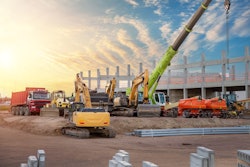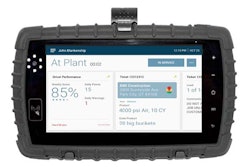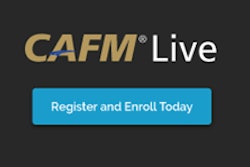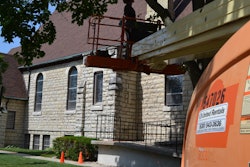
The latest American Rental Association data reflects a constant growth pattern for equipment rental through 2018. The “Rental Penetration Index”, which measures how much of the construction equipment available for work is rental equipment, also states there will be similar increases. In my opinion these results come about from a combination of factors:
- more OEMs pushing rent-to-rent transactions on their dealer network;
- increases in construction activity;
- and a transition to rental by construction companies hoping to reduce both the cost to own and operate equipment.
But no matter how much rental equipment is put into formal rental fleets, contractors will still maintain an inventory of equipment they use on a consistent basis. Hopefully, the time utilization and cost allocation to their jobs is calculated properly and billed at a level to cover annual ownership and operating costs, including the cost to transport the units to and from the jobsite.
There is little doubt that the ability to properly manage and maintain an equipment fleet requires better record keeping and technology skills in today’s market. Let’s assume we consider each piece of equipment is its own business, with a separate balance sheet, income statement and cash flow statement. Considering the equipment alone (without an operator), we need to bill out and collect adequate revenue to bill all the costs associated with that equipment, make a profit and still generate enough cash flow to make debt service payments. Needless to say, the profit you produce and the cash flow requirement are two different things, which require some accounting knowledge to work around.
Use Rental as a Benchmark
So here you sit — a contractor with hundreds of pieces of construction equipment, who maybe is not comfortable with the data you are getting regarding the investment in equipment, the cost to keep the equipment and the ROI on the equipment you own. It’s a common dilemma. Throw in the cash flow considerations and you may find out you are leaving money on the table and may be better off with a smaller equipment fleet. But how do you know?
When you think about it, you are really in the equipment rental business and basically do the same thing a rental company does to make a profit and generate enough cash flow to cover debt service. Consequently, you should be measuring performance on your equipment fleet the same way a rental company does.
Make Use of Construction Equipment Trends to Maximize Profit
A rental company has to generate a certain percentage of equipment cost as rental revenue, which is a net of both time and dollar utilization for any given period. The more time you bill it out, the more you make. The higher you set the rates, the more you make. Increase both the time utilization and the rates and ROI soar.
The same goes for your equipment via the equipment charges you apply to the jobs you are working on. You bill one job for the cost of the unit, and you bill others throughout the year with a goal to make an acceptable annual ROI on the unit that allows amortization of the equipment cost financing.
Knowing what I know about the equipment rental business and the contracting business, and what I see as the future of equipment management, I have to say that the service requirements of new equipment, the technology advances available to help monitor and track equipment and the telematics data available lead you into forming your own internal rental company. It can be used to manage a profitable equipment fleet that keeps you competitive in your market and maximizes the return on your overall investment in the business.
Think this makes sense? I do, because if you have a significant investment in equipment, the market today requires that you have the ability to measure equipment performance, allowing for decisions to increase or decrease the fleet based on historical results compared to future needs.
Three Choices to Manage Equipment
If you accept you need this kind of knowledge to manage your equipment investment, the next question is how do you make this transition to help manage your business? You basically have three choices:
- Get your primary equipment dealer to help you out in terms of scheduling, parts and service.
- Get one of your local rental companies to do the same.
- Set up an internal rental company.
Which one you choose will depend on: how many units you own; whether you have a system that allows for tracking rental transactions similar to what a rental company would do; how much of your capital the equipment is tying up; and how comfortable you are that you can properly bid jobs in a competitive fashion.
I prefer setting up an internal rental department if you have the ability to do so. However, this solution only works if you have the ability to create proper data for rental accounting, and have qualified techs and shop equipment to deal with the new technology that is part of today’s fleet management process.
Next in line is working with local rental companies. They are basically in the same business you are in and they can help minimize the equipment investment where it’s cheaper to rent than to keep under-utilized units in your fleet.
What I see in the market is large contractors wanting to buy up a local rental company to have it manage their equipment; this includes purchasing, financing, servicing, renting and transporting equipment, among others. Are they wrong with this approach? I don’t think so. To me it’s the quickest way to improve the management of your equipment fleet.
So what will you do — own it, manage it or both? Your bank balance and financing ability will tell you which option to take.
Garry Bartecki is the managing member of GB Financial Services LLP and a consultant to the Associated Equipment Distributors. He can be reached at (708) 347-9109 or [email protected].



















